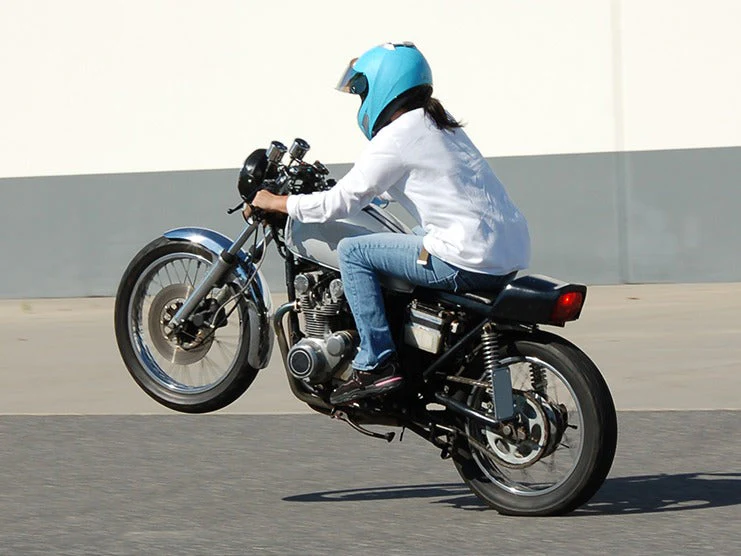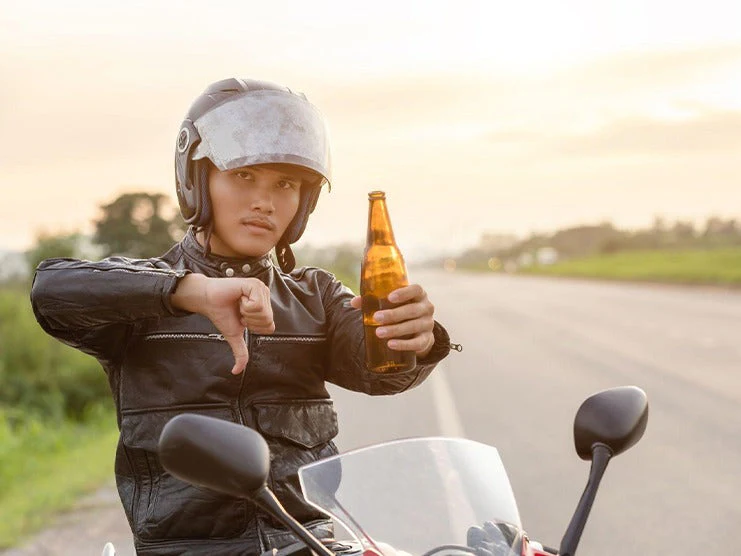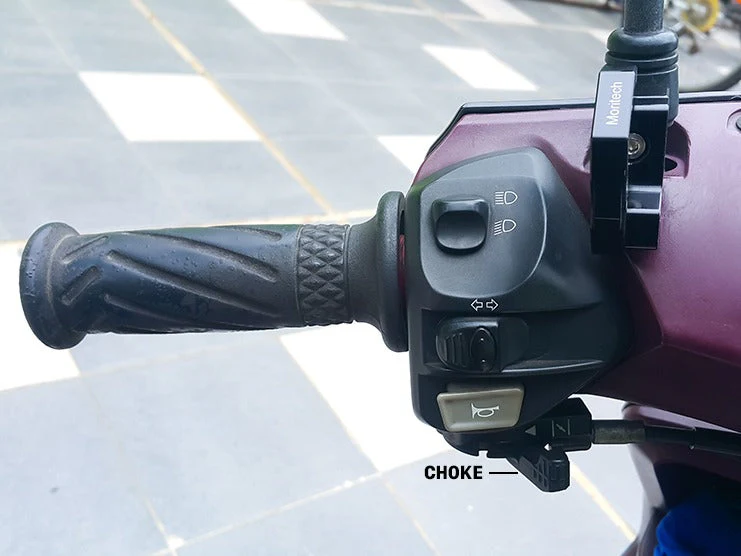A motorcycle wheelie is a risky but fun stunt that has been a staple of motorcycle culture for years. Many riders are obsessed with performing wheelies as it is a technique that demonstrates skill.
Performing a wheelie is difficult as it requires riders to do multiple things at the same time, including maintaining balance and controlling the throttle, rear brake, and clutch.
This article discusses the pros and cons of motorcycle wheelies and how to perform wheelies safely.
Table of Content
1. What is a Motorcycle Wheelie?
A wheelie is when you lift a motorcycle’s front wheel off the ground while continuing to ride on just the rear wheel.
2. Types of Wheelies
2.1 The Clutch Wheelie
The clutch wheelie is when you attempt a wheelie by applying the clutch and accelerating at the same time. This technique allows you to initiate a wheelie in a controlled and deliberate manner.
For a clutch wheelie, be mindful of a motorcycle’s power curve to ensure you apply the clutch at the right rpm and speed. It is tricky to generate enough force to go into a wheelie without causing the motorcycle to flip backward.
If executed correctly, the clutch wheelie will not damage the motorcycle or the clutch.
Advantages of the Clutch Wheelie
- Riders know exactly where the front wheel will come up
- Wheelies can be performed on motorcycles with low-powered engines
- Wheelies can be performed on motorcycles at higher gears
- Brings the front wheel up quickly, allowing the rider to ride on the rear wheel longer
2.2 The Power Wheelie
The power wheelie is performed by abruptly cutting the throttle and then suddenly pulling it again or swiftly rolling on the throttle. Raising the front wheel on certain motorcycles is easier if you use the throttle in the right riding position.
You can also perform a power wheelie by tugging on the handlebars and pulling the throttle while sitting at the back of a seat. This wheelie can be done if accelerating while trying to travel uphill.
It is easier to perform a power wheelie on a powerful, lightweight motorcycle with a short wheelbase than on a heavyweight and low-powered motorcycle.
Power wheelies are easier to perform on racing motorbikes.
Advantages of the Power Wheelie
- This wheelie only requires throttle control
- Lifts up the front wheel in a smooth, controlled manner
- Offers better control by allowing the riders to keep their hands wrapped around the handlebars
3. Are Motorcycle Wheelies Legal?
In the United States, performing wheelies is considered illegal since it can increase the risk of accidents and injuries.
Performing a wheelie can be dangerous if the rear wheel is imbalanced. An imbalanced rear wheel can cause the motorcycle to tip over or collide with other vehicles.
Many states have strict laws and fines to discourage riders from doing wheelies. For example, being caught doing a wheelie in Florida the first time could result in a $1,000 fine. If you are caught performing a wheelie a second time, you'll have to pay $2,500 and may have your license suspended. On the third offense, it will result in a $5,000 fine, your license being suspended for ten years, and spending up to five years in prison.
4. Risks of a Wheelie
- The front wheel being off the road can reduce stability, balance, and control.
- A point of no return is when a rider leans too far when trying to turn a corner and fails to recover back into an upright position.
- When raising the front wheel, uneven weight distribution on the handlebars can cause the bike to lose balance.
- If the bike is unbalanced while traveling in a straight line, you will not be able to make corrections once the front wheel is up in the air. After the front wheel has been lifted, the only way to change direction is by making slight shifts with your body.
- When the front end of the motorcycle is raised, the headlight also points upward, which reduces visibility and makes it more difficult to spot incoming vehicles and road hazards that may be ahead.
5. Are Wheelies Bad for Motorcycles?
When performing a wheelie, there’s a greater chance of falling over or wobbling at high speeds. A wheelie can potentially damage the following motorcycle parts:
5.1 Clutch
Some riders use the clutch to perform a wheelie by pulling it, revving the engine, and then releasing the clutch. This causes the front end of the motorcycle to become raised. Quickly releasing the clutch can cause the shift fork to or cause the friction plates to prematurely wear down. A damaged clutch can cause a motorcycle to pop out of gear and increase the frequency of false neutrals.
Replacing the motorcycle clutch can cost between $800-$1,300.
5.2 Engine
The engine must have enough oil to ensure it functions properly. When performing a wheelie, it becomes difficult for the oil to travel throughout the engine. An engine without adequate oil will reduce lubrication and could result in engine failure.
Repairing the motorcycle engine can cost between $2,000-$4,000.
5.3 Fork Seals
The front fork has a pair of seals located in the fork tubes that keep oil in and keep debris out.
When you bring the front wheel back down, the weight of your motorcycle slamming onto the road can cause the fork seals to wear out faster.
Faulty fork seals can cause oil leakage and affect handling, braking, and steering.
Replacing fork seals can cost between $100-$400.
5.4 Chain
A wheelie increases how much the motorcycle chain stretches. Stretching the chain can wear down the sprockets and lead to premature failure.
The cost to replace a chain can be between $300-$500.
6. How to Perform a Wheelie Safely?
Before performing wheelies, remember to keep the following factors in mind.
- Proper Gear: Wearing the proper riding gear will help protect you from suffering severe or fatal injuries. The appropriate riding gear consists of leather pants or jeans, a leather jacket, gloves, boots, and a helmet.
- Experience: Performing a wheelie requires a lot of effort, skill, and experience. It is advised to only attempt this if you are a skilled motorcycle rider.
- Practice: It’s recommended you practice on a road with less traffic to avoid collisions and reduce distractions.
6.1 Steps on How to Perform a Wheelie
Put Your Motorcycle in the First Gear
The first gear is the lowest gear on a motorcycle best suited for climbing hills. It is easier to do a wheelie if your motorcycle is in first gear. It is not necessary to shift gears since a power wheelie involves accelerating to lift the front wheel.
Accelerate to an Adequate Speed
To master the wheelie, you must be able to reach the adequate speed necessary to lift the front wheel into the air. It’s recommended you start practicing how to do a wheelie at a speed between 10-15 mph.
If you try a wheelie at a slow speed, your motorbike will not have enough force to pull the front wheel up. However, if you are going too fast, you may lose control of your motorcycle.
Hit the Throttle and Lift the Front Wheel
Once you have reached an appropriate speed, accelerate hard while pulling the handlebars to raise the front wheel. If it feels like you are falling backward direction, press the rear brake to prevent the motorcycle from flipping over and bring the rear wheel back down.
Maintain Your Balance
After lifting the front wheel into the air, shift your body to maintain balance. Make sure to keep the front end of your motorcycle pointed straight, keep your weight in the center, and lean towards the back of the seat.
Press the Rear Brake to Lower the Front Wheel
To stop the wheelie, use the rear brake. Press the back brake slowly to ensure you bring the front wheel back down smoothly. If you suddenly hit the brakes, it will cause the front wheel to crash back down, which could damage your motorcycle.
7. Last Words
Being able to perform a wheelie can be a fun experience, but it also poses many dangers. If performed incorrectly, wheelies put stress on various motorcycle parts, including the clutch, fork seals, rims, tires, engine, shift forks, chain, and friction plate. A wheelie requires a lot of practice, focus, and experience. If you lack any of these, avoid attempting wheelies.
You can install high-quality Viking Bags aftermarket parts to improve your motorcycle’s safety features and look, including SEATS, HANDLEBARS, FAIRINGS, CRASH BARS, and SISSY BARS.













Leave a comment
All comments are moderated before being published.
This site is protected by hCaptcha and the hCaptcha Privacy Policy and Terms of Service apply.